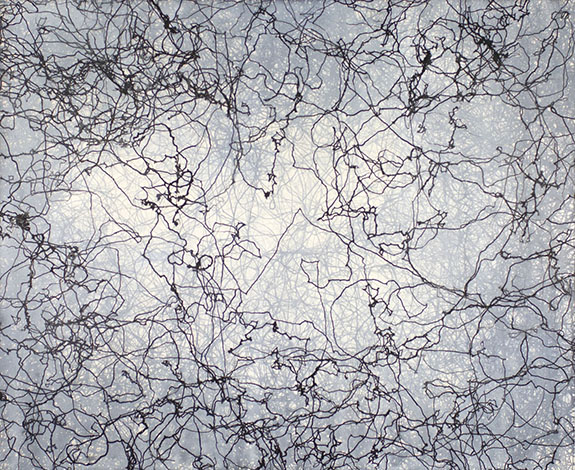 |
 |
In the latter, Lukas doesn’t just implant larva on painted canvases and allow the pupae to slither into the wondrous linear entanglements we see here. He also, to some extent, guides the process. Heat, light, movement, moisture and color density, he discovered, affect how the pupa behave, and with that knowledge he physically intervenes, adjusting the variables to gently guide the way nature takes its course. Yet to the casual observer, the linear permutations of two-large scale paintings and nine mixed media drawings on view appear to be products of pure chance. Over time, the insects’ erratic wriggling to maturity creates webs and thickets of roiling line suggestive of branches, rivers, and vascular systems.
.jpg) |
to mold plaster, which, when affixed to wood panels and seen at a distance, appear as honeycombs of radiant, pointillist color. Up close we see them for what they are: tiny cups of dried pigment. This equal and dispassionate focus on all parts of the picture plane emphasizes the repeated, mechanical nature of their construction, a programmatic, arduous aspect offset by the dappled, pixelated sheen coming off the surfaces.